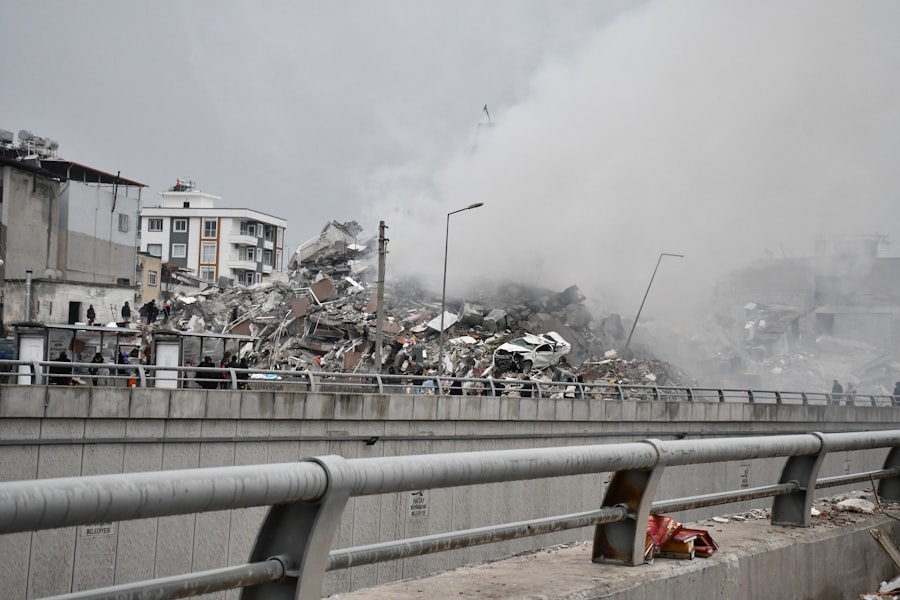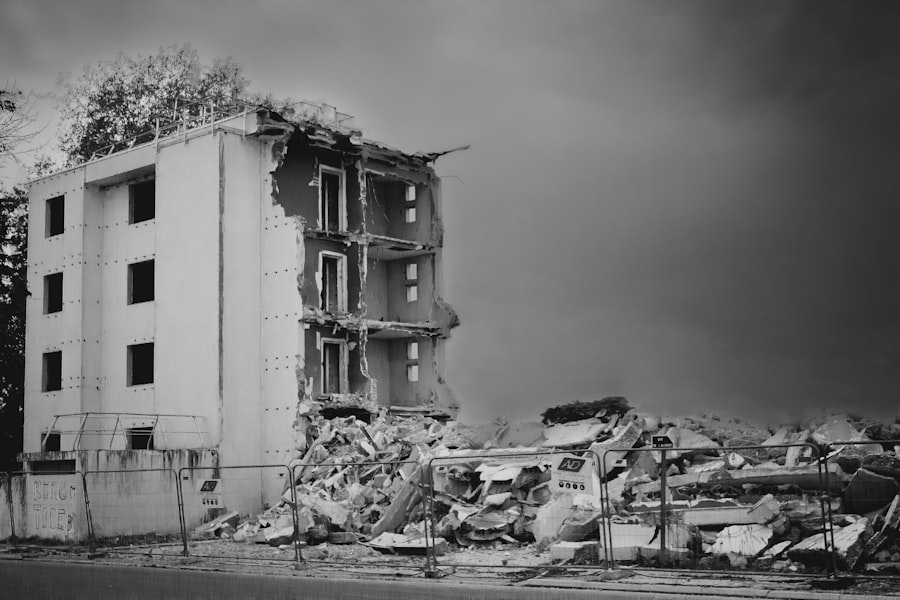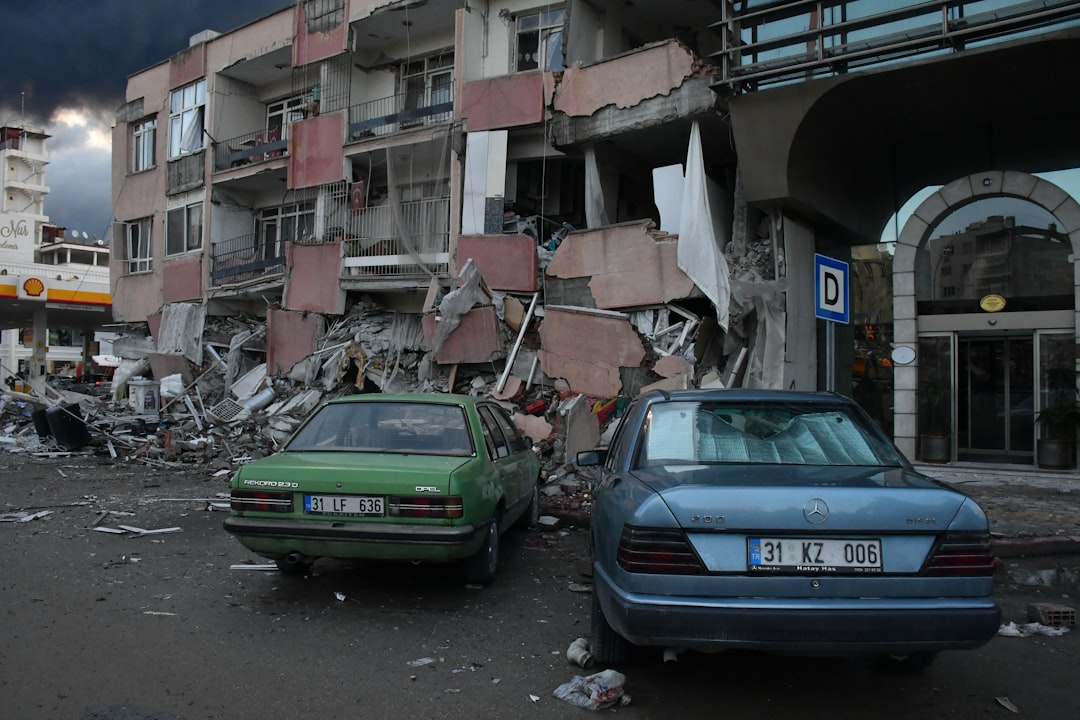The Drake Passage, a body of water that separates South America from Antarctica, is known for its tumultuous seas and unpredictable weather.
The earthquake, which registered a magnitude that caught many off guard, served as a stark reminder of the geological forces at play in this remote part of the world. As the waves surged and the ground trembled, the implications of such natural disasters became painfully clear. In the aftermath of the earthquake and subsequent tsunami, researchers and emergency responders scrambled to assess the damage and understand the full scope of the disaster.
The event highlighted the vulnerabilities of coastal communities and the need for robust disaster preparedness plans. As scientists studied the seismic activity, they also began to explore the broader implications for marine ecosystems and human settlements in the region. The Drake Passage earthquake and tsunami became a case study in both natural disaster response and environmental resilience, prompting discussions about how to better prepare for future events.
Key Takeaways
- The Drake Passage earthquake and tsunami had significant impacts on the surrounding area, highlighting the need for preparedness and response measures.
- The geographical significance of the Drake Passage as a key location for oceanic and atmospheric circulation makes it vulnerable to natural disasters such as earthquakes and tsunamis.
- The earthquake triggered a powerful tsunami that caused widespread devastation, emphasizing the importance of understanding tsunami triggers and implementing early warning systems.
- Nearby coastal communities’ response and preparedness played a crucial role in mitigating the impact of the tsunami, underscoring the importance of community resilience and disaster preparedness.
- International collaboration in disaster relief efforts was essential in addressing the aftermath of the Drake Passage earthquake and tsunami, demonstrating the need for global cooperation in disaster response and recovery.
The Geographical Significance of the Drake Passage
The Drake Passage is not merely a stretch of water; it is a vital conduit for ocean currents and marine life. This narrow body of water connects the Atlantic and Pacific Oceans, playing a crucial role in global climate regulation. The unique geographical features of the Drake Passage, including its deep trenches and strong currents, contribute to its significance in oceanography.
The passage is also home to diverse marine ecosystems, which are influenced by the cold waters that flow from Antarctica. This ecological richness makes it an area of interest for scientists studying climate change and its effects on marine biodiversity. Moreover, the Drake Passage serves as a critical route for shipping and maritime navigation.
Vessels traversing this passage must navigate its treacherous waters, which are notorious for high winds and large waves. The strategic importance of the Drake Passage extends beyond its ecological value; it is also a key route for international trade and transportation. Understanding the geographical significance of this area is essential for comprehending the potential impacts of natural disasters like earthquakes and tsunamis, which can disrupt both marine ecosystems and human activities.
The Impact of the Earthquake on the Surrounding Area

The earthquake that struck the Drake Passage had immediate and profound effects on the surrounding area. Coastal communities experienced tremors that rattled buildings and instilled fear among residents. In some locations, infrastructure was damaged, leading to power outages and disruptions in communication.
The psychological impact on local populations was significant, as many grappled with the uncertainty of aftershocks and potential further seismic activity. Emergency services were quickly mobilized to assess damage and provide assistance to those affected. In addition to physical damage, the earthquake also had economic repercussions.
Fishing industries, which are vital to many coastal communities in this region, faced immediate challenges as boats were damaged or destroyed by both the quake and the ensuing tsunami. The disruption of fishing activities not only affected local economies but also raised concerns about food security in areas reliant on seafood as a primary source of sustenance. As communities began to recover from the initial shock, they faced the daunting task of rebuilding their lives amidst ongoing uncertainties.
Understanding the Tsunami Triggered by the Earthquake
| Location | Time | Magnitude | Depth | Tsunami Height |
|---|---|---|---|---|
| Indian Ocean | December 26, 2004 | 9.1-9.3 | 30 km | Up to 30 meters |
| Japan | March 11, 2011 | 9.0 | 29 km | Up to 40 meters |
| Sumatra, Indonesia | December 26, 2004 | 9.1-9.3 | 30 km | Up to 30 meters |
The tsunami triggered by the earthquake was a direct consequence of the seismic activity beneath the ocean floor. As tectonic plates shifted, they displaced vast amounts of water, generating powerful waves that traveled across the Drake Passage at alarming speeds. The nature of tsunamis is such that they can strike with little warning, making them particularly dangerous for coastal populations.
In this instance, the tsunami’s impact was felt not only in nearby coastal areas but also in more distant regions, as waves propagated across vast stretches of ocean. Scientists worked diligently to analyze data from buoys and tide gauges to understand the tsunami’s characteristics. They noted that while some areas experienced devastating wave heights, others were spared from significant damage due to geographical features that mitigated the impact.
This variability underscored the complexity of tsunami behavior and highlighted the importance of localized studies in predicting future events. Understanding how tsunamis form and propagate is crucial for developing effective warning systems and preparedness strategies.
The Response and Preparedness of Nearby Coastal Communities
In the wake of the earthquake and tsunami, nearby coastal communities faced an urgent need for response and recovery efforts. Local governments activated emergency plans, mobilizing resources to assist those affected by the disaster. Shelters were established for displaced residents, while medical teams were deployed to provide care for injuries sustained during the quake and tsunami.
Community organizations also played a vital role in coordinating relief efforts, demonstrating resilience in the face of adversity. However, this disaster also exposed gaps in preparedness among some coastal communities. While some areas had established protocols for dealing with seismic events, others were caught off guard by the magnitude of the earthquake and its aftermath.
This disparity highlighted the need for comprehensive disaster preparedness training and education programs tailored to local contexts. As communities began to rebuild, discussions emerged about how to enhance resilience against future natural disasters through improved infrastructure, early warning systems, and community engagement.
The Role of Early Warning Systems in Mitigating Tsunami Damage

Early warning systems are critical tools in mitigating the impact of tsunamis on coastal populations. Following the Drake Passage earthquake, scientists emphasized the importance of timely alerts to ensure that communities could evacuate before waves struck. These systems rely on a network of sensors and monitoring stations that detect seismic activity and changes in sea level.
When an earthquake occurs, data is rapidly analyzed to determine whether a tsunami is likely to follow. In this instance, while some areas received timely warnings that allowed residents to evacuate to higher ground, others were not as fortunate due to limitations in coverage or communication infrastructure. This disparity underscored the need for continuous investment in early warning technologies and public education campaigns about tsunami risks.
By fostering a culture of preparedness and awareness, communities can better equip themselves to respond effectively when faced with future threats.
The Environmental and Ecological Consequences of the Tsunami
The ecological consequences of the tsunami triggered by the Drake Passage earthquake were significant and multifaceted. As waves crashed onto shorelines, they disrupted marine habitats and altered coastal ecosystems. The force of the water uprooted vegetation, eroded beaches, and impacted nesting sites for various species.
Additionally, pollutants from damaged infrastructure entered marine environments, posing risks to aquatic life. Researchers began assessing these environmental impacts soon after the disaster struck. They conducted surveys to monitor changes in biodiversity and ecosystem health in affected areas.
The findings revealed that while some species showed resilience in recovering from disturbances, others faced long-term threats due to habitat loss and pollution. This situation raised important questions about how best to protect marine ecosystems in light of increasing natural disasters linked to climate change.
International Collaboration in Disaster Relief Efforts
In response to the devastation caused by the earthquake and tsunami in the Drake Passage region, international collaboration became essential for effective disaster relief efforts. Countries around the world offered assistance through financial aid, supplies, and personnel trained in emergency response. Humanitarian organizations mobilized quickly to provide food, medical care, and psychological support to affected communities.
This collaborative spirit highlighted not only global solidarity but also underscored the interconnectedness of nations when facing natural disasters. As resources flowed into impacted areas, lessons were shared about best practices in disaster management and recovery strategies. Such cooperation is vital for building resilience against future events, as it fosters a sense of shared responsibility among nations facing similar challenges.
Lessons Learned from the Drake Passage Earthquake and Tsunami
The Drake Passage earthquake and tsunami provided numerous lessons for scientists, policymakers, and communities alike. One key takeaway was the importance of investing in robust disaster preparedness measures tailored to local contexts. Communities that had established emergency plans fared better than those without such frameworks in place.
This experience underscored the need for ongoing education about seismic risks and effective response strategies. Additionally, researchers emphasized that understanding geological processes is crucial for predicting future seismic events in this region. Enhanced monitoring systems can provide valuable data that informs risk assessments and helps communities prepare for potential disasters.
By learning from past experiences, stakeholders can work together to develop more effective strategies for mitigating risks associated with earthquakes and tsunamis.
The Future Risk of Earthquakes and Tsunamis in the Drake Passage
As scientists continue to study seismic activity in the Drake Passage region, concerns about future earthquakes and tsunamis remain prevalent. The geological characteristics that contributed to this recent disaster persist, indicating that similar events could occur again. Climate change may also exacerbate these risks by influencing ocean currents and tectonic activity.
To address these challenges, ongoing research is essential for improving understanding of seismic hazards in this area. Collaborative efforts among scientists, governments, and local communities can lead to more effective risk management strategies that prioritize safety and resilience against future disasters.
Moving Forward After the Disaster
In conclusion, while the Drake Passage earthquake and tsunami brought devastation to coastal communities, it also served as a catalyst for change and improvement in disaster preparedness efforts. The lessons learned from this event will shape future responses to natural disasters not only in this region but globally as well. By fostering collaboration among nations, investing in early warning systems, and prioritizing environmental protection, stakeholders can work together to build resilience against future threats.
As communities begin to heal from this disaster, they carry with them a renewed sense of awareness about their vulnerabilities and strengths. Moving forward requires a commitment to learning from past experiences while embracing innovative solutions that enhance safety and sustainability in an ever-changing world.
In recent years, the Drake Passage has been a focal point for researchers studying seismic activity and its potential to trigger tsunamis. An article on MyGeoQuest delves into the intricate dynamics of this region, exploring how tectonic movements beneath the ocean can lead to significant geological events. For a deeper understanding of these phenomena, you can read more about the seismic activities in the Drake Passage and their implications in the article available on MyGeoQuest. This resource provides valuable insights into the ongoing research and monitoring efforts aimed at predicting and mitigating the impacts of such natural disasters.
WATCH NOW! Drake Passage: Earth’s Deadliest Waters Revealed
FAQs
What is the Drake Passage?
The Drake Passage is the body of water between the southern tip of South America and the northern tip of the Antarctic Peninsula. It is known for its rough seas and strong winds, making it a challenging area for navigation.
What is an earthquake in the Drake Passage?
An earthquake in the Drake Passage is a seismic event that occurs in the tectonically active region surrounding the passage. The movement of tectonic plates in this area can lead to the release of energy in the form of an earthquake.
What is a tsunami in the Drake Passage?
A tsunami in the Drake Passage is a series of ocean waves caused by a large-scale disturbance, such as an underwater earthquake or volcanic eruption. These waves can travel across the open ocean and potentially impact coastal areas.
How do earthquakes in the Drake Passage contribute to tsunamis?
Earthquakes in the Drake Passage can cause the seafloor to uplift or subside, displacing a large volume of water and generating a tsunami. The size and impact of the resulting tsunami depend on the magnitude and depth of the earthquake.
What are the potential impacts of a tsunami in the Drake Passage?
A tsunami in the Drake Passage has the potential to impact coastal areas in South America and the Antarctic Peninsula. It can lead to flooding, destruction of infrastructure, and pose a threat to human life and marine ecosystems.
How are tsunamis in the Drake Passage monitored and mitigated?
Tsunamis in the Drake Passage are monitored using a combination of seismic sensors, ocean buoys, and satellite technology. Early warning systems are in place to alert coastal communities of potential tsunami threats, and evacuation plans are developed to mitigate the impact of a tsunami.
